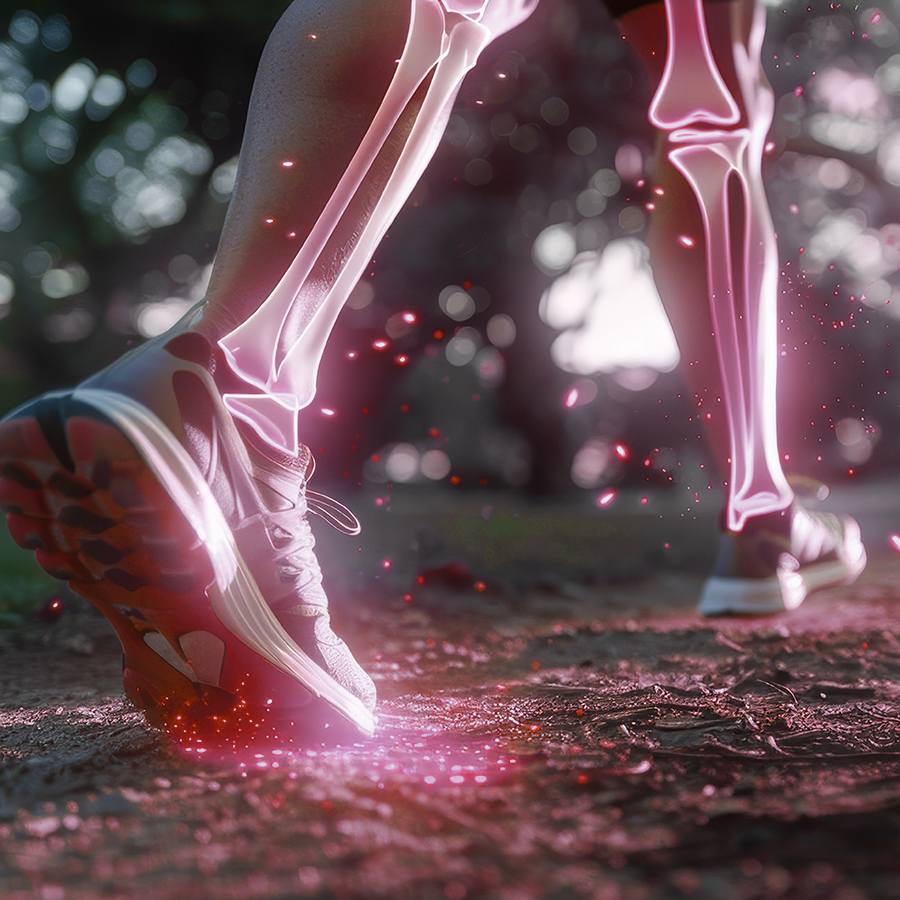Revamp Your Lifestyle to Make Changes for Better Skeletal Health
No Bones About It
As we age, our bones continue to remodel, but we lose bone mass because the resorption of bone is usually greater than bone formation. In most people, bone mass peaks by age 30.
Osteoporosis can occur if bones become brittle and weak. Research shows that one in three women and one in five men experience an osteoporotic fracture after the age of 50.
While medication is available to help increase bone density in people diagnosed with osteoporosis, there are side effects.
Addressing bone health before you have a problem is your safest plan.
Lifestyle changes
“Prevention starts at primary care, and lifestyle is where prevention starts,” Amy says.
Whether a patient comes for a wellness exam or preventative care, Amy is all about education. And when it comes to bone health?
“If you don’t use it, you lose it,” Amy says. “Once your bones start weakening, you really need to preserve what you have.”
She explains that modifying your lifestyle for the better is the No. 1 thing you can do to improve your health.
Since we can’t change our genes, you may be at risk if bone loss is part of your family history. If that’s your reality, you need to be proactive.
“Change your mindset and see what is modifiable in your life to prevent this from happening and to prolong your health,” Amy advises.
For instance, she says, tobacco and alcohol use contribute to weakened bones in both men and women. There’s the weight factor, too.
“Maintaining a healthy weight is very important because the heavier you are, the more stress this puts on your bones and the less you want to exercise,” she adds.
Calcium and Vitamin D
Although a healthy diet is the best way to get needed nutrients, many people don’t consume adequate amounts in food, so Amy recommends using a quality supplement to get enough calcium and vitamin D, which work together and are crucial for bone health.
Men ages 51-70 need 1,000 milligrams of calcium a day. Women should have 1,200 milligrams. At 71 and older, men should also have 1,200 milligrams daily.
Adults ages 50 and older should have 800 to 1,000 IU (20 milligrams = 800 IU) of vitamin D per day.
“Optimal vitamin D levels are important to increase the efficiency of calcium absorption. If your D levels are low, it affects your bones,” Amy notes. “Getting out in the sun for 15 to 20 minutes daily helps you naturally absorb D.”

Keep moving!
Make it a point to incorporate at least 20 to 30 minutes of weight-bearing exercise several times a week, if not every day.
But not just any exercise will build bone, explains Jaime Brenkus, the American College of Sports Medicine-certified Exercise Physiologist who created the wildly popular “8-Minute Abs” workout in the 1990s.
“As we age, the quickest way is some type of resistance training to give your muscles an overload and stimulate bone growth,” Jaime says.
Jaime recommends weight-bearing exercises like walking, running, dancing, low-impact aerobics, elliptical training machines, stair climbing and overall movement that works directly on bones in the legs, hips and lower spine to slow the rate of bone loss.
Building strength and muscular endurance in the lower body can also improve your balance and stability to make falls less likely. Jaime suggests practicing standing on one leg and incorporating exercises such as tai chi, toe touches and one-legged dead lifts.
If you’ve already been diagnosed with bone loss, discuss any exercise plan with your health care provider. You may want to stick with low-impact or no-impact exercises like water aerobics or exercises in a pool.
Consider Hormones
Hormones also play a role in bone health.
“When women go through menopause, we have a drastic drop in estrogen levels, which can lead to weakening of the bones,” Amy states. “When men have low testosterone, they tend to lose bone density. In men, fatigue and weight gain can be an indication of low testosterone.”
Although you’ve probably thought of testosterone as a male hormone, women have it too. Men also have some estrogen.
When doing annual bloodwork, Amy recommends checking hormone and thyroid levels to identify imbalances.
Hormone replacement using both testosterone and estrogen may be used to encourage bone growth.

